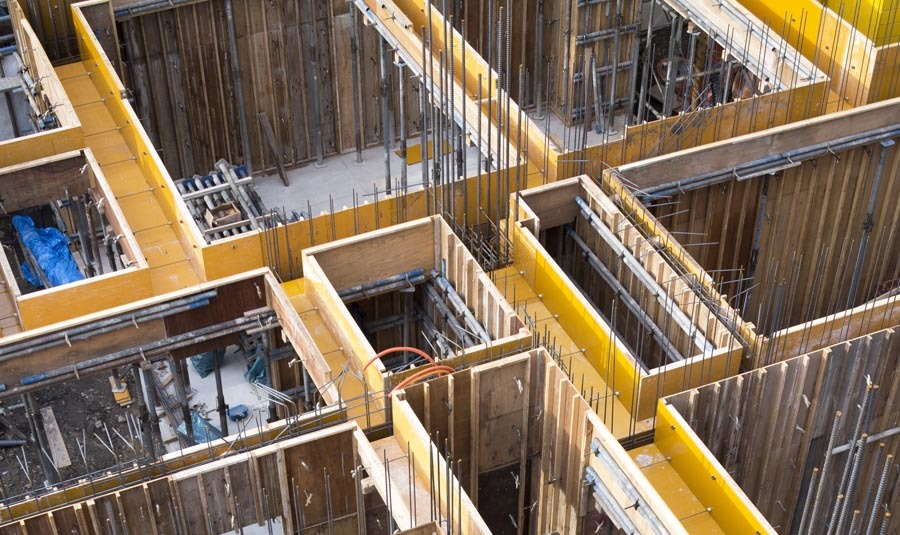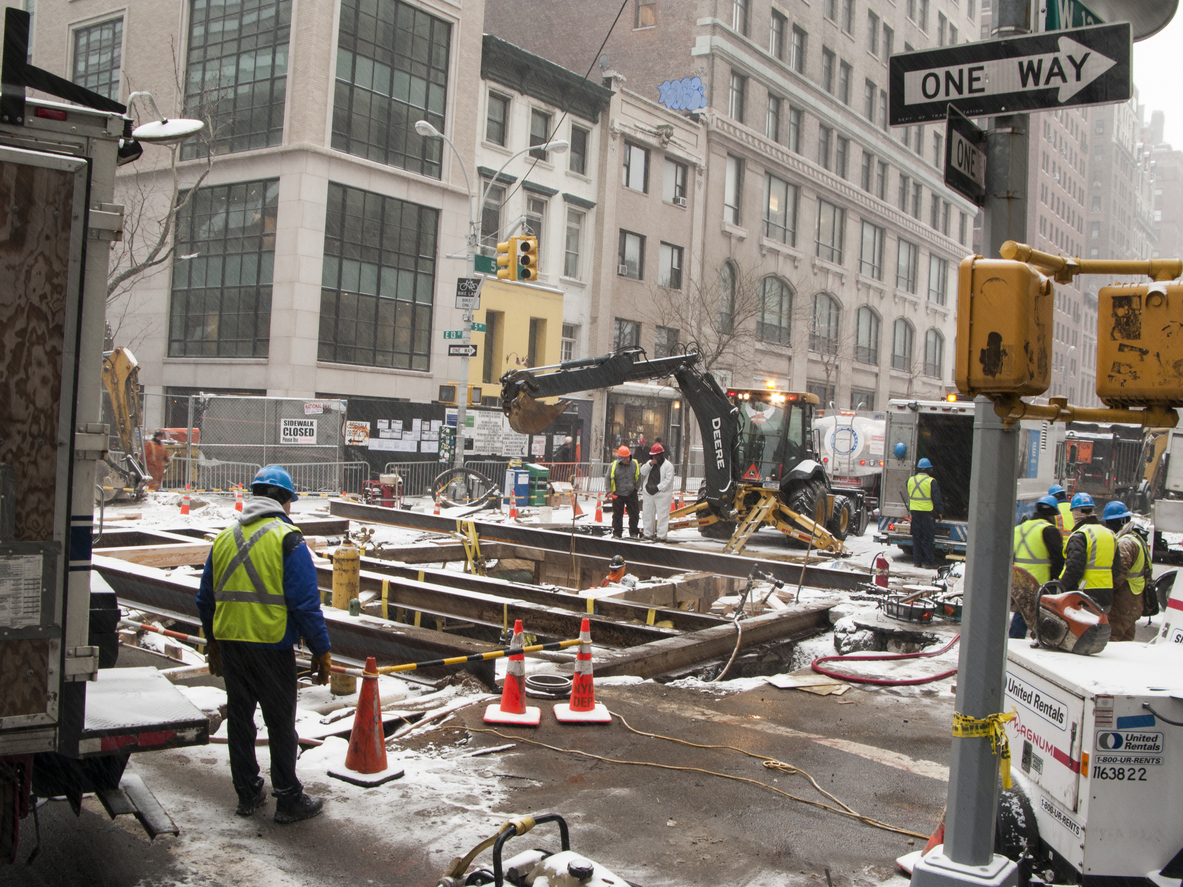A Guide to Construction Project Management Methods
A Guide to Construction Project Management Methods
Even simple construction projects involve many layers of detail. To deliver on-time and on-budget, project managers must decide which project management method is the best fit for their project and teams.
In this guide, we’ll take a closer look at common project management methods for construction, their pros and cons, and how to select one that’s right for your project.
To jump to what you need to know, click the links below:
What does project management mean in the construction industry?
A comparison of 5 construction project management methods
How to choose a construction project management method
Or, go back to: A Guide to Common Construction Project Deliver Methods
What does project management mean in the construction industry?
In the world of construction, project management refers to how resources are managed and people and tasks are coordinated throughout the project. Project management methodologies for construction are similar to those used in other specialized fields with mission-based projects, such as aerospace and energy, but must meet the specific needs of construction. For example, construction project management must acknowledge the centrality of people management: every construction project includes many teams of people playing various roles, from owners to general contractors to plumbers, often working in different locations, from offices to job sites.
There’s not a single “right” methodology for construction projects. Each one has different strategies and principles for managing issues that arise during a project’s delivery. Because every project is a little different, choosing the best methodology means considering variables such as parameters, timeline, scope, and preferences of the people involved.
 A comparison of 5 construction project management methods
A comparison of 5 construction project management methods
Let’s take a look at five of the most common project management methods used in the construction industry—and how they compare with one another.
Waterfall
Also called traditional project management, waterfall project management methodology remains one of the most commonly used methodologies in construction today. Its name comes from an approach to software development that stresses linear progression, with each step leading to the next. In construction, the waterfall approach works like a real waterfall: each step or phase of the project must be completed before it can overflow to the next step. While waterfall methodology is a logical approach, it can be limiting because teams cannot do several tasks simultaneously. Instead, they must wait for the previous phase to be completed before they move forward.
Pros:
Allows stakeholders to define project goals and budgets clearly
Teams can easily focus their attention on milestones as the project progresses
Allows for thorough quality checks at each stage
Details are typically not missed because the project only moves forward when one stage is completed
Cons:
Some teams will be stalled and inactive while waiting for other teams’ tasks to be completed, causing frustration and slowing down progress
Projects with many details or add-ons may not fit well into this model, which demands clearly defined phases and milestones
Once developed, the plan can be rigid, making any change orders or adjustments complicated
When should I use waterfall methodology?
Projects that can be defined easily in the planning phase are well-suited to this approach—for example, when many similar buildings will be constructed based on similar plans. Large projects that demand strict documentation, such as government-funded capital projects, often benefit from or even require this approach.
 Agile construction project management
Agile construction project management
The agile project management style breaks a construction project into several smaller stages, but unlike the Waterfall approach, it allows for continuous collaboration between stakeholders at each stage. Teams look at planning, executing, and evaluating progress at each step in the project, creating natural opportunities for changes and adjustments to be made along the way. Agile project management prioritizes individual team members and their communication above tools and processes, making space for collaboration and flexibility as a project unfolds.
Pros:
Allows teams to maximize their productivity within time constraints
Fosters good communication between teams and stakeholders with built-in reviews and check-ins
Creates a collaborative atmosphere by encouraging feedback from teams and workers on the ground, with everyone working together toward greater efficiency
Cons:
Construction projects often don’t fit naturally into the agile framework, meaning it could require extra effort to use this methodology
That extra effort often results in added costs
Requires strong leadership from supervisors who understand the methodology and can anticipate upcoming needs or shifts
When should I use agile methodology?
New construction projects that involve some uncertainties are well-suited to agile methodology because of its emphasis on adaptability. For example, an innovative building project that relies on sustainable energy sources and incorporates cutting-edge connected technologies could be a good fit for this methodology, because there are likely to be unforeseen challenges and course corrections along the way.
 Lean construction management
Lean construction management
Based on the Toyota Production System (TPS), lean project management aims to deliver better value with less wasted time and materials. Construction managers often apply lean principles to their projects with positive results. The primary values associated with lean construction management include respect for people and a desire to foster good communication with the project’s hands-on workers, a focus on the flow and efficiency of work, and a drive toward continuous assessment and improvement of processes. Because of its drive to reduce waste, lean construction management places a high value on environmental sustainability. Under this methodology, construction managers typically plan the entire project at once from the top down, ensuring that efficient use of time and materials is maximized throughout the process.
Pros:
Streamlined processes lead to increased productivity
Reduced waste and time to completion
Because processes are simplified and the project comes together more quickly, the chances of onsite injuries are typically decreased
Cons:
Workers and customers can misunderstand the meaning of “lean construction,” assuming it means less expensive—but while reducing time and wasted materials often leads to cost savings, that’s not a given
There’s often a learning curve for those new to this methodology, and without buy-in from all stakeholders, it can be difficult to move a project forward
When should I use lean construction methodology?
The lean approach to construction works best with projects that can be fully planned ahead of time and don’t contain many unexpected twists and turns. Shifting teams toward this approach if they don’t have previous experience can be challenging, so it’s best to start training well ahead of time and ensure that you have adequate leadership and support for all workers and stakeholders throughout the process.
 Critical path
Critical path
The critical path method (CPM) in construction is a classic approach that remains one of the most-used methodologies in construction project management today. In this approach, known as critical path scheduling, construction managers break down every step in the process and seek to map out a pathway to complete the project with efficiency and speed. A variant of CPM is critical chain, which considers not only the series of tasks, but also the availability of resources needed to complete each step. Critical chain construction project management requires more intricate planning and tracking of materials, often incorporating connected technologies and construction management software to make it work.
Pros:
As one of the older approaches to construction project management, CPM is familiar to most stakeholders and easy to execute
Both CPM and critical chain emphasize efficiency and productivity
Paired with construction software and connected technologies such as sensors and trackers, CPM and critical chain can provide excellent visibility into your projects, helping you make better decisions
Cons:
Each step depends on the one before it in the chain, so if one fails, the entire project can be derailed
Without high-quality data, these methods can lead to stalled progress or even project failure
CPM and critical chain tend to be more rigid approaches, without the flexibility and adaptability some projects require
When should I use critical path or critical chain?
Critical path and critical chain are excellent methods to adopt when you have adequate data-gathering tools and software to ensure you’re charting an accurate path forward. For projects where data is harder to obtain or there’s some uncertainty about the availability of materials, it’s best to choose another methodology.
 Construction Work Breakdown Structure (WBS)
Construction Work Breakdown Structure (WBS)
A work breakdown structure (WBS) refers to “a deliverable-oriented hierarchical decomposition of the work to be executed by the project team,” according to the Project Management Body of Knowledge (PMBOK). WBS in construction project management seeks to define the entire project at the outset, creating a plan that increases in detail at each descending level. Visually, the plan looks like a family tree, with the final product (the building) at the top, and lists of individual tasks and responsibilities defined in detail at the bottom.
Pros:
Creates a visual representation of the entire project, making it easy for stakeholders to grasp the total scope of work
Clearly shows relationships between project elements and tasks
Can be adjusted easily as the project progresses
Makes it easier to estimate costs
Cons:
Too much or too little detail in the WBS can cause problems
There’s potential for confusion about tasks and boundaries, particularly if there isn’t enough detail in the WBS
Creating and curating the visual WBS is time-consuming and intensive for those involved
 How to choose a construction project management method
How to choose a construction project management method
Because every construction project is a bit different, the project management method that works for one might not be the best fit for the next. When choosing a project management method, consider the following factors:
Time
Are you working within a tight deadline, or is there more flexibility in the timing of project completion?Budget
Is the budget set in stone or is there some flexibility depending on obstacles and decisions along the way?Efficiency
How important is efficiency to the owner, general contractor, and other stakeholders? Do you have the support in place to oversee a methodology, such as WBS, that might not be familiar to many of your teams?Flexibility and adaptability
Is flexibility important to your primary stakeholders? Do you need the ability to change and adapt project plans as you go, or do you expect the parameters to stay essentially the same from start to finish?Complexity
How complex is the project at hand? Does it lend itself to sequential steps (waterfall or critical path/chain) or multi-tiered simultaneous efforts (agile or lean)?Workflow process
What workflow processes are your stakeholders and teams accustomed to? What do they prefer and work best in?Challenges
How many challenges do you expect to encounter along the way? (There are always surprises, but a newly designed building that’s never been constructed before will naturally yield more challenging situations than a home plan that’s been built many times.)Method popularity and acceptance
How widely accepted and used is the methodology you’re considering? Do you have stakeholders and teams on board who are open to learning new approaches and processes, or do they prefer more traditional ways of working?Data accessibility
How accessible does your project data need to be? Will workers need access to documents and drawings even when they’re out of the office?
Powering your construction project
No matter which project management method you choose, Trimble’s ProjectSight project management software can help maximize your efficiency and productivity. Built for collaboration, ProjectSight allows designers, builders, and contractors to help manage all of your projects by providing a single source of information for all stakeholders. Manage budgets and costs, documents, and communication with workers in the field, all from one platform.
Contact Us
Ask us how ProjectSight can help your projects stay on-budget and improve bottom line.
